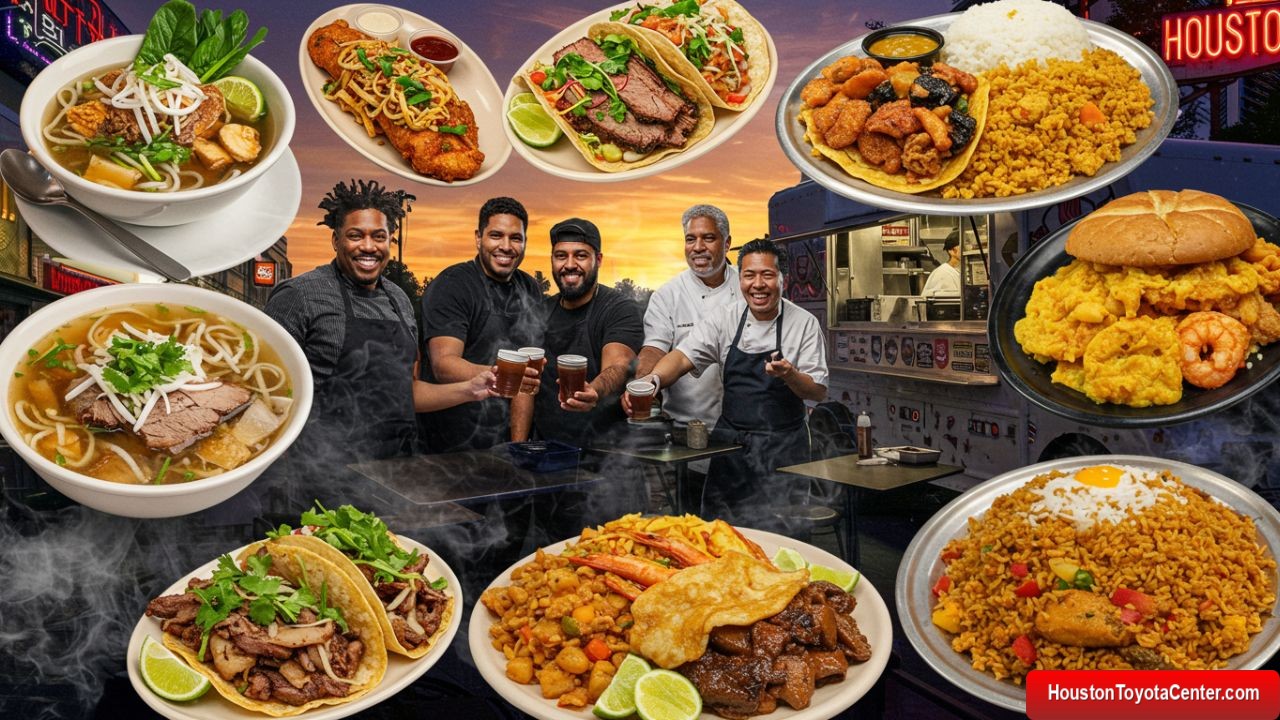Houston, Texas, is a city known for its sprawling energy sector, space exploration legacy, and humid subtropical climate. But in recent decades, it has quietly—and then explosively—earned recognition as one of America’s premier culinary capitals. This transformation from a steak-and-potatoes town to a globally celebrated food destination is a story of diversity, resilience, and innovation. Let’s explore how Houston’s unique blend of culture, entrepreneurship, and geography turned it into a gastronomic powerhouse.
1. A Foundation Forged by Diversity
Houston’s culinary evolution begins with its people. As the most ethnically diverse metropolitan area in the U.S., according to a 2023 Rice University study, the city is home to large Vietnamese, Mexican, Indian, Chinese, and Nigerian communities. This mosaic of cultures laid the groundwork for a food scene that defies categorization.
- Early Influences : Indigenous Karankawa and Atakapa tribes relied on Gulf Coast seafood and native plants. Spanish and Mexican settlers introduced staples like corn tortillas and chili peppers.
- Immigration Waves : Post-1975 Vietnamese refugees transformed neighborhoods like Midtown into hubs for pho and banh mi. Mexican immigrants from Monterrey and Oaxaca brought birria and mole, while Louisiana Cajun transplants added crawfish boils to the mix.
Table 1: Houston’s Culinary Demographics
| Community | Population (2023) | Signature Dishes |
|---|---|---|
| Vietnamese | 120,000+ | Pho, banh mi, goi cuon |
| Mexican | 1.7 million | Tacos al pastor, barbacoa |
| Indian | 150,000+ | Butter chicken, dosa |
| Nigerian | 60,000+ | Jollof rice, suya |
2. The Rise of Culinary Trailblazers
Houston’s ascent as a food capital was accelerated by visionary chefs who blended tradition with bold experimentation.
FREE: Quickly identify and understand problems with your vehicle 🚘
CLICK HERE- Chris Shepherd : A James Beard Award winner, Shepherd championed Houston’s multicultural identity with dishes like Korean braised goat and dumplings at Underbelly . His mantra, “The story of Houston food is the story of Houston people,” became a rallying cry.
- Anita Jaisinghani : At Pondicheri , she reimagined Indian cuisine with Texan ingredients, creating dishes like masala-spiced Gulf shrimp.
- Justin Yu : His Michelin-starred Theo’s redefined fine dining with minimalist, ingredient-driven plates (e.g., fermented blackberry tart).
Key Milestones :
- 2011: Food & Wine names Houston a “Top 10 Food City.”
- 2023: Houston boasts 12 Michelin-starred restaurants, up from zero in 2015.
3. The Role of Innovation and Accessibility
Houston’s food scene thrives on democratizing gourmet experiences.
- Food Trucks and Pop-Ups : Chefs like Luis Roger (BCN Taste & Tradition) and Shannen Tune (Craft Burger) used mobile kitchens to test concepts during the 2008 recession. Today, trucks like Coreano’s (Korean-Mexican fusion) draw lines daily.
- Farm-to-Table Movement : Urban farms like Plant It Forward supply local produce to restaurants, reducing Houston’s carbon footprint.
- Tech Integration : Apps like Chowbus and Doordash connect diners to hidden gems like Crawfish & Noodles (Viet-Cajun crawfish).
4. Resilience Through Crisis
Houston’s food community has repeatedly turned adversity into opportunity.
- Hurricane Harvey (2017) : Restaurants like Hugo’s and Ninfa’s fed first responders and displaced residents, sparking a culture of mutual aid.
- Pandemic Pivot : Chefs launched meal kits (e.g., UB Preserv’s DIY taco kits) and outdoor dining “pods” to survive lockdowns.
Quote : “Houston’s chefs don’t just cook—they build community,” says Alison Cook , longtime Houston Chronicle food critic.
5. Global Recognition and Economic Impact
Houston’s culinary boom has reshaped its economy and identity.
- Tourism : Food tourism revenue hit $5.8 billion in 2023, per the Greater Houston Convention and Visitors Bureau.
- Festivals : Events like the Houston Barbecue Festival and Southern Smoke (benefiting mental health) draw global visitors.
- Media Spotlight : Netflix’s Street Food: USA featured Houston’s Harold’s Chicken Shack , while Bon Appétit named it “America’s Next Great Food City.”
6. Challenges and the Road Ahead
Despite its success, Houston faces hurdles:
- Gentrification : Rising rents threaten historic eateries like Frenchy’s Chicken .
- Climate Change : Extreme weather disrupts Gulf Coast seafood supplies.
Yet, the future looks bright:
- Sustainability Initiatives : Restaurants like Brennan’s now use zero-waste kitchens.
- Next-Gen Chefs : Young talents like Dakota Garrett (son of Houston rap legend Bun B) blend hip-hop culture with Southern cuisine.
Conclusion : Houston’s culinary dominance stems from its refusal to be pigeonholed. It’s a city where a third-generation tamale vendor shares a block with a Michelin-starred sushi chef, and where innovation is served with a side of humility. As Chef Chris Shepherd says, “Houston isn’t a melting pot—it’s a boiling pot. And the broth is delicious.”


Leave a Reply